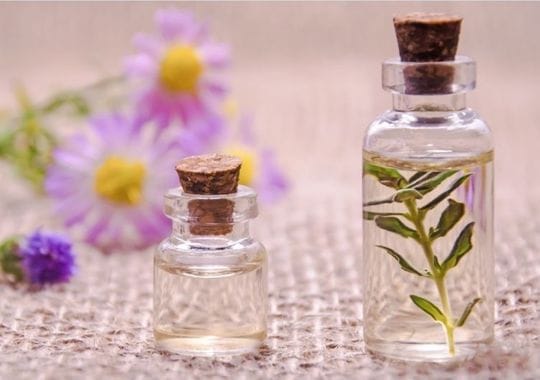Fragrances have a captivating power, evoking emotions and memories with just a whiff. Among the vast array of scents, one term that often appears on perfume bottles and cologne labels is "Eau de." But what exactly does Eau de mean? In this article, we will delve into the definition of Eau de and explore its fascinating origins and history.
As Amazon affiliates we may earn a commission if you purchase a product at no cost to you.

Watch this amazing video.
Definition of Eau de
The term "Eau de" originates from French, where "eau" translates to "water." In the context of fragrances, Eau de refers to a specific concentration or strength of the scent. It signifies the composition of the fragrance and determines its intensity and longevity.
Eau de falls into different categories, such as Eau de Parfum (EDP), Eau de Toilette (EDT), and Eau de Cologne (EDC). Each category represents a distinct concentration level, with Eau de Parfum having the highest concentration of fragrance oils, followed by Eau de Toilette and Eau de Cologne.
Origins and History of Eau de
The history of Eau de can be traced back to the 17th century in Europe, where perfumers began experimenting with different formulations and concentrations of scents. During this time, perfume houses in France gained prominence for their expertise in creating exquisite fragrances.
One notable figure in the development of Eau de was Giovanni Maria Farina, an Italian perfumer based in Cologne, Germany. In 1709, Farina created a fragrance known as "Eau de Cologne," which became a sensation across Europe. Eau de Cologne featured a lighter and fresher composition, making it suitable for everyday use.
As perfumery evolved, the term "Eau de" became widely adopted to differentiate various concentrations of fragrances. Perfume houses began creating Eau de Parfums, Eau de Toilettes, and Eau de Colognes, each catering to different preferences and occasions.
In the modern era, Eau de fragrances continue to hold significant cultural and commercial importance. They adorn the shelves of perfumeries and department stores, offering an extensive range of scents for both men and women. Eau de has become a staple in the world of perfumery, allowing individuals to express their personalities and create lasting impressions through fragrance.
Understanding the meaning and significance of Eau de is crucial for fragrance enthusiasts and consumers alike. It enables us to make informed choices when selecting the right scent for ourselves or as a gift for others.

Decoding Eau de Perfumes, Colognes, and Toilettes
When browsing through the wide selection of fragrances, you might come across terms like Eau de Perfume, Eau de Cologne, and Eau de Toilette. These classifications signify different concentration levels of the scent and play a vital role in determining its intensity and longevity. In this section, we will decode the differences between Eau de Perfume, Eau de Cologne, and Eau de Toilette, and explore the concentration levels in Eau de fragrances.
Differentiating Eau de Perfume
Eau de Perfume, often abbreviated as EDP, is a fragrance with a higher concentration of perfume oils compared to other Eau de classifications. Typically, EDP contains 15-20% perfume oils, making it more potent and long-lasting on the skin. Due to its higher concentration, Eau de Perfume offers a rich and intense aroma that lingers throughout the day.
Eau de Cologne (EDC)
Eau de Cologne, or simply EDC, is a fragrance category that originated in the city of Cologne, Germany, during the 18th century. Traditionally, Eau de Cologne had a lower concentration of perfume oils compared to other fragrances. It featured a refreshing, citrus-based composition, making it suitable for a lighter and more invigorating scent experience. Eau de Cologne typically contains 2-4% perfume oils, resulting in a more subtle and short-lived fragrance.
Eau de Toilette (EDT)
Eau de Toilette, known as EDT, is a fragrance classification that lies between Eau de Perfume and Eau de Cologne in terms of concentration. EDT generally contains 5-15% perfume oils, striking a balance between longevity and freshness. Eau de Toilette offers a medium-strength fragrance that lasts for a few hours, making it suitable for everyday wear.
Understanding the Concentration Levels in Eau de Fragrances
Eau de fragrances are categorized based on their concentration of perfume oils. The higher the concentration, the more potent and long-lasting the fragrance tends to be. Here is a breakdown of the concentration levels commonly found in Eau de fragrances:
Parfum (Perfume Extract): Parfum has the highest concentration of perfume oils, typically ranging from 20-30%. This results in an intense and long-lasting fragrance experience that can linger on the skin for hours.
Eau de Parfum (EDP): EDP contains a concentration of perfume oils ranging from 15-20%. It offers a strong and enduring scent that can last throughout the day.
Eau de Toilette (EDT): EDT has a moderate concentration of perfume oils, typically between 5-15%. It provides a balanced fragrance that is suitable for daily use and lasts for several hours.
Eau de Cologne (EDC): EDC has the lowest concentration of perfume oils, usually ranging from 2-4%. It offers a light and refreshing scent that is perfect for a quick pick-me-up but may require reapplication throughout the day.
Understanding the concentration levels in Eau de fragrances allows you to make informed choices when selecting a scent that aligns with your preferences and desired longevity.
In the next sections, we will explore the composition of Eau de fragrances, the art of perfumery behind their creation, and the role of Eau de in the fashion industry. Stay tuned to delve further into the captivating world of fragrances.
Unraveling the Notes and Ingredients
Eau de fragrances are a complex blend of various notes and ingredients, meticulously crafted to create a captivating olfactory experience. In this section, we will unravel the essential components of Eau de fragrances and explore the concept of top, middle, and base notes that contribute to their unique character.
Essential Components of Eau de Fragrances
Eau de fragrances are composed of three primary components: perfume oils, alcohol, and water. The perfume oils are responsible for the fragrance itself, while alcohol acts as a carrier, facilitating the evaporation of the scent and its diffusion into the surrounding air. Water helps dilute the perfume oils and balance the overall composition.
In addition to these essential components, Eau de fragrances may also incorporate other ingredients such as natural and synthetic aromatic compounds, essential oils, and fixatives. These additional elements contribute to the complexity and depth of the fragrance.
Top, Middle, and Base Notes in Eau de
Eau de fragrances are often described in terms of their top, middle, and base notes. These notes represent different stages of the fragrance's development and play a crucial role in its overall character and longevity.
Top Notes: The top notes, also known as the opening or head notes, are the initial impression of the fragrance. They are the lightest and most volatile components, providing an immediate burst of scent when the fragrance is applied. Top notes are often fresh, citrusy, or herbal in nature and evaporate relatively quickly. Common top notes include bergamot, lemon, lavender, and green leaves.
Middle Notes: Also referred to as the heart or body notes, the middle notes emerge once the top notes start to fade. Middle notes serve as the main body of the fragrance and provide its distinctive character. They are typically floral, fruity, or spicy in nature, adding complexity and depth to the scent. Common middle notes include rose, jasmine, cinnamon, and nutmeg.
Base Notes: Base notes are the final stage of the fragrance's development and form the foundation or backbone of the scent. They are the longest-lasting components, providing stability and depth to the fragrance. Base notes are often rich, warm, and woody, creating a lasting impression. Common base notes include vanilla, patchouli, sandalwood, and musk.
The combination of top, middle, and base notes in Eau de fragrances creates a dynamic and evolving scent experience. As the fragrance unfolds over time, the different notes reveal themselves, resulting in a multi-dimensional olfactory journey.
Understanding the composition and notes in Eau de fragrances allows you to appreciate the complexity and craftsmanship behind these scents. In the subsequent sections, we will delve into the art of perfumery and explore the process of creating Eau de fragrances. Stay tuned to unravel the secrets behind the captivating world of perfumes.

The Art of Perfumery
Perfumery is an exquisite art form that involves the meticulous blending of aromatic ingredients to create captivating fragrances. In this section, we will explore the perfumers behind the craft and the intricate process of making Eau de fragrances.
Perfumers and Their Craft
Perfumers, also known as "noses," are highly skilled professionals who possess a refined sense of smell and a deep understanding of fragrance composition. They are the masterminds behind the creation of Eau de scents, utilizing their expertise and creativity to craft unique and alluring fragrances.
Perfumers undergo years of training and apprenticeship to refine their olfactory abilities. They study the characteristics of various aromatic ingredients, learn about their interactions, and develop a vast knowledge of scent families, notes, and accords. With their honed skills, they can envision and create fragrances that evoke specific emotions, memories, or moods.
The work of a perfumer involves a delicate balance between artistry and technical precision. They carefully select and combine aromatic compounds, essential oils, and synthetic ingredients to create harmonious and well-balanced fragrances. The process requires not only a deep understanding of the ingredients but also a keen sense of creativity and intuition.
The Process of Making Eau de Fragrances
Creating Eau de fragrances is a multi-step process that involves several stages, from conceptualization to final production. While each perfumer may have their unique approach, the general process typically follows these key steps:
Inspiration and Conceptualization: The perfumer begins by gathering inspiration and developing a concept for the fragrance. This can be influenced by a specific theme, a desired emotion, or a particular ingredient.
Selection of Ingredients: Based on the concept, the perfumer selects the aromatic ingredients that will form the foundation of the fragrance. These ingredients may include essential oils, aromatic compounds, and synthetic molecules.
Blending and Formulation: The perfumer carefully blends the selected ingredients in precise proportions to achieve the desired fragrance profile. They take into account the concentration levels, balance of notes, and the overall character of the scent.
Testing and Refinement: The initial blend is tested to assess its olfactory qualities, longevity, and performance on the skin. The perfumer makes adjustments and refinements to achieve the desired result. This iterative process may involve multiple rounds of testing and modification.
Finalization and Production: Once the desired fragrance is achieved, the formula is finalized. The perfumer works closely with production teams to ensure the accurate replication of the fragrance on a larger scale. The final product is then bottled, packaged, and ready for distribution.
The process of making Eau de fragrances requires a combination of technical expertise, artistic vision, and attention to detail. It is a labor-intensive and time-consuming endeavor, as perfumers strive to create scents that captivate and leave a lasting impression.
By understanding the craftsmanship and effort involved in creating Eau de fragrances, we can truly appreciate the artistry and dedication that goes into each bottle of perfume or cologne. In the subsequent sections, we will explore the role of Eau de in the fashion industry, its cultural significance, and tips for choosing and applying these fragrances. Stay tuned to delve further into the fascinating world of perfumery.
Conclusion
Eau de fragrances hold a significant place in the world of scents, offering a wide range of captivating aromas and enhancing our sensory experiences. Throughout this article, we have explored the meaning and significance of Eau de, the differentiation between Eau de Perfume, Eau de Cologne, and Eau de Toilette, and the essential components and notes that make up Eau de fragrances.
Recommended Article

Frequently Asked Questions FAQs
What does Eau de mean?
Understand the definition and origin of Eau de, a term used in the world of fragrances to denote different concentration levels.
How do I choose the right Eau de fragrance?
Explore factors to consider when selecting an Eau de fragrance, including personal preference, occasion, and season.
What are the proper techniques for applying Eau de?
Learn the correct application techniques for Eau de fragrances, including targeting pulse points, avoiding rubbing, and layering for a long-lasting scent experience.











